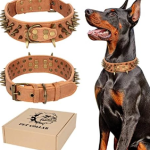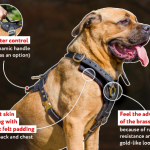Dog Bones
Introduction
When it comes to caring for our canine companions, dog bones often play a crucial role in their health and happiness. But with so many options available, it can be challenging to choose the best dog bone for your pet. This comprehensive guide will delve into the benefits of dog bones, explore different types, and provide essential safety tips to ensure your furry friend enjoys them safely.
Benefits of Dog Bones
1. Dental Health
One of the primary benefits of dog bones is their positive impact on dental health. Chewing on bones helps to reduce plaque and tartar buildup, which can lead to dental issues such as gum disease and bad breath. The mechanical action of chewing scrapes off food particles and bacteria, promoting cleaner teeth and fresher breath.
2. Mental Stimulation
Dogs are naturally inclined to chew, and providing them with bones can serve as an excellent source of mental stimulation. Chewing engages their mind, helps alleviate boredom, and reduces stress. This mental engagement is particularly beneficial for high-energy breeds and puppies who need more stimulation.
3. Physical Exercise
Chewing on bones can also contribute to physical exercise. The act of chewing can help strengthen your dog’s jaw muscles and provide a form of physical activity. For dogs that might not be as active, bones offer an alternative way to expend energy and stay fit.
4. Nutritional Value
Certain dog bones, especially those that contain marrow, can provide nutritional benefits. Marrow bones are rich in essential nutrients, including calcium and phosphorus, which are vital for maintaining healthy bones and teeth.
Types of Dog Bones
Choosing the right type of dog bone involves understanding the different options available and their respective benefits. Here are some popular types:
1. Raw Bones
Raw bones, such as those from beef or chicken, are often favored by dog owners for their nutritional benefits. They are generally softer than cooked bones and contain beneficial nutrients. However, raw bones should be sourced from reputable suppliers and handled carefully to avoid contamination.
2. Cooked Bones
Cooked bones are often used for their enhanced flavor and ease of preparation. However, they can be more brittle and may splinter, posing a risk to your dog’s digestive system. It’s essential to supervise your dog while they chew on cooked bones and avoid giving them bones that have been overly cooked.
3. Synthetic Bones
Synthetic bones are made from durable materials like nylon or rubber. These bones are designed to be long-lasting and safe for chewing. They come in various shapes and sizes, catering to different dog breeds and chewing habits. Many synthetic bones also have added features, such as treat compartments or textures to clean teeth.
4. Edible Bones
Edible bones are often made from digestible ingredients like compressed rawhide or meat-based treats. These bones are designed to be consumed entirely and can be a tasty reward for your dog. However, it’s crucial to monitor your dog while they eat these bones to ensure they don’t overconsume or experience digestive issues.
5. Antler Bones
Antler bones are a natural and long-lasting option for dogs. They are a good source of minerals and tend to be less likely to splinter than other types of bones. Antler bones are also less likely to cause gastrointestinal upset, making them a popular choice among pet owners.
Safety Tips for Dog Bones
While dog bones can provide numerous benefits, safety is paramount. Here are some essential tips to ensure your dog’s chewing experience is safe and enjoyable:
1. Choose the Right Size
Selecting an appropriately sized bone is crucial for your dog’s safety. Bones that are too small can pose a choking hazard, while bones that are too large may be difficult for your dog to handle. Ensure the bone is proportional to your dog’s size and chewing strength.
2. Supervise Chewing
Always supervise your dog while they are chewing on bones. This supervision allows you to monitor for any signs of splintering, choking, or digestive issues. If the bone becomes damaged or small enough to swallow, discard it immediately.
3. Avoid Cooked Bones
Cooked bones, especially those that have been grilled or baked, are more likely to splinter and cause harm. Stick to raw or synthetic bones to reduce the risk of splintering and potential injury.
4. Check for Allergies
If you’re introducing a new type of bone to your dog’s diet, start with a small amount and monitor for any signs of allergies or sensitivities. Common symptoms of food allergies include itching, vomiting, or diarrhea.
5. Keep Bones Clean
Hygiene is essential when it comes to dog bones. Regularly clean and inspect bones to ensure they remain free from mold, bacteria, or foreign objects. Discard any bones that appear damaged or contaminated.
6. Consult Your Veterinarian
Before introducing new types of bones or treats into your dog’s diet, it’s always a good idea to consult with your veterinarian. They can provide personalized recommendations based on your dog’s health, size, and dietary needs.
How to Incorporate Dog Bones into Your Pet’s Routine
Integrating dog bones into your pet’s routine can enhance their overall well-being. Here are some tips on how to incorporate bones effectively:
1. Use Bones as Rewards
Dog bones can be an excellent reward for good behavior or training achievements. Use them as positive reinforcement to encourage desired behaviors and strengthen your bond with your pet.
2. Provide Variety
To keep your dog engaged and prevent boredom, offer a variety of bones. Rotate between different types, sizes, and flavors to maintain their interest and provide diverse benefits.
3. Combine with Exercise
Incorporate bone-chewing sessions into your dog’s daily exercise routine. Pairing bones with physical activity can provide a well-rounded approach to their overall health and well-being.
4. Monitor Consumption
Keep track of how many bones your dog consumes and adjust their overall diet accordingly. Bones should complement their regular meals, not replace them. Excessive consumption of bones or treats can lead to nutritional imbalances.
5. Store Properly
Store dog bones in a cool, dry place to maintain their freshness and safety. Avoid leaving bones outside or in areas prone to contamination.
Conclusion
Dog bones can be a valuable addition to your canine companion’s life, offering benefits such as improved dental health, mental stimulation, and physical exercise. By understanding the different types of bones available and following essential safety tips, you can ensure that your dog enjoys them in a safe and healthy manner.
Remember to choose the right size and type of bone for your dog’s needs, supervise their chewing sessions, and consult your veterinarian for personalized advice. With the right approach, dog bones can become a delightful and beneficial part of your pet’s routine, contributing to their overall well-being and happiness.






